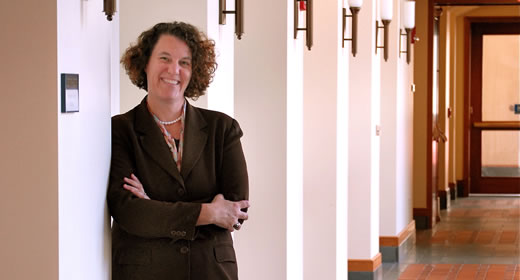
As Congress debates reauthorization of the Higher Education Act, and with it the bipartisan FAST Act bill introduced by Senators Lamar Alexander (R-TN) and Michael Bennet (D-CO), the Ford School’s Education Policy Initiative releases a timely new policy brief, “Revisiting FAFSA simplification: Expanding access to the IRS data retrieval tool.”
The brief, prepared by Ford School Professor Susan Dynarski with doctoral candidate Mark Wiederspan (U-M, higher education administration) describes “how the complexity of the FAFSA continues to hinder students’ ability to meet financial aid deadlines,” and examines the feasibility of using a simplified formula to determine aid eligibility. The brief’s data are based on a comparison of the results of aid determinations based on 40,400 full FAFSA aid applications against those calculated with the use of tax data from the prior fiscal year.
The Financial Aid Simplification and Transparency (FAST) Act, inspired by the work of Susan Dynarski (U-M, Ford School) and Judith Scott-Clayton (Columbia), would dramatically simplify the financial aid application process for students considering higher education. Among the list of improvements, FAST would eliminate the 100-plus question FAFSA, replacing it with a two question application based on prior-year data.
One criticism of FAST has been that the elimination of so many questions would hinder the ability of colleges to determine need-based aid accurately while significantly changing aid allocations. However, Dynarski and Wiederspan find that a simplified application could closely replicate the current distribution of aid, while dramatically reducing the paperwork burden for families (often discouraged by the complex application) and colleges alike.
With one reform, Dynarski and Wiederspan found Pell eligibility did not change for 70 percent of applicants. For those with a change, the average Pell grant increased by $37 from a baseline of $2,515. With another reform, Pell eligibility did not change for 75 percent of applicants, and the average Pell grant decreased by $54 (with the largest declines for families with incomes greater than $50,000). With the combined reforms, which would eliminate the FAFSA and use prior-year tax data, Pell eligibility was unchanged for 68 percent of applicants and the average grant decreased by $51.
“Applying for federal aid for college is complex and slow,” write the brief’s authors. “Information about aid eligibility arrives well after students have made crucial decisions about preparation for college. Complexity in the aid process undermines the intent of aid, which is to get more students into college.”
